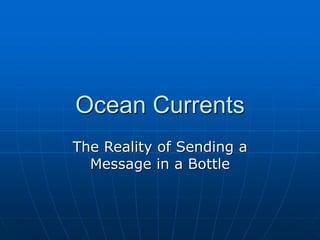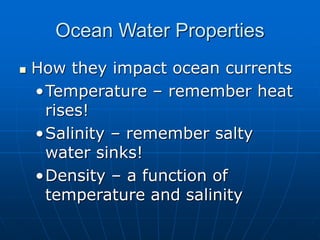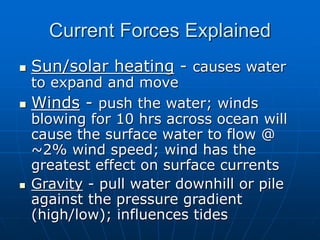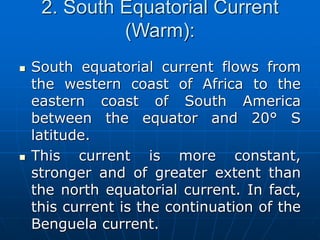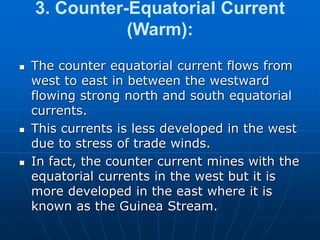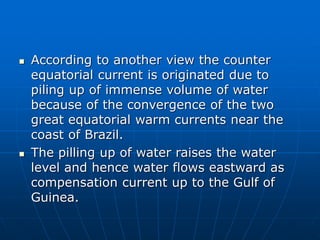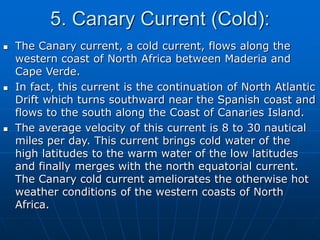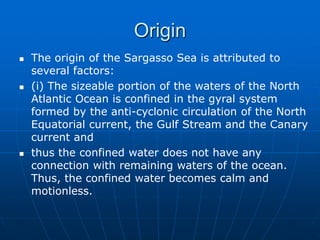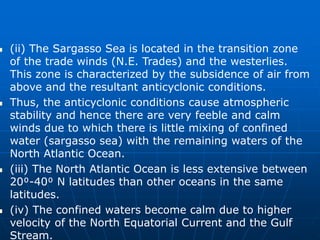This document discusses ocean currents, including their layers, properties, forces, and major currents in the Atlantic Ocean. It describes three main layers - surface currents in the upper 10% influenced by winds and temperature, a transition layer where temperature and density rapidly change, and deep currents in the lower 90% influenced more by density and gravity. The key forces that drive ocean currents are solar heating, winds, gravity, and the Coriolis effect. It outlines several major Atlantic currents including the Gulf Stream, North Atlantic Drift, and others.
